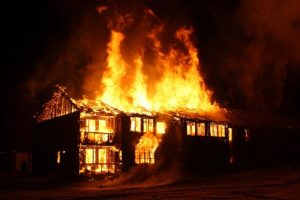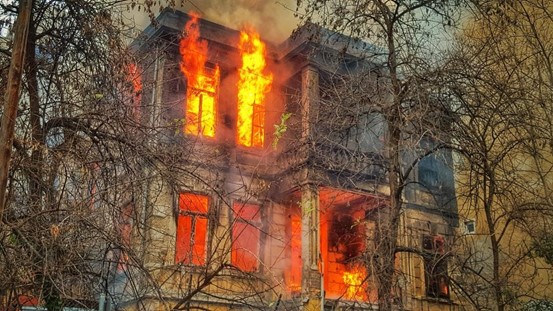In the comforting cocoon of your home, fire may seem like a distant threat. Yet, it is a reality that many homeowners face each year. Understanding how to prevent and recover from this unforeseen disaster is crucial for safeguarding lives and property. This comprehensive guide provides essential tips and insights to empower homeowners to fortify their homes against fires and recover effectively if one occurs.
Understanding the Causes of House Fires
Before we can prevent house fires, it’s essential to understand their common causes. Electrical malfunctions, including house fire caused by your fan, kitchen accidents, and heating equipment are some of the leading culprits. Electrical fires often start due to faulty wiring or overloaded outlets. In the kitchen, unattended cooking and grease build-up are significant factors. Staying vigilant while cooking and cleaning the stove area are simple yet effective preventive measures. Heating equipment, such as space heaters, can ignite flammable materials if placed too close. Ensuring proper clearance around these devices and following manufacturer guidelines reduces the risk significantly.
1. Fire Prevention in the Kitchen
The kitchen is a hotspot for fires, but with the proper precautions, these can be avoided. Start by keeping flammable items like dishes and paper towels away from the stove. Having a fire extinguisher within reach is also an intelligent move for immediate response. Pay attention to what you’re cooking. If you must go, turn off the stove temporarily. Additionally, be cautious with oils, as they can ignite quickly. Clean your oven and stovetop regularly to prevent grease build-up. Grease fires spread rapidly, making them highly dangerous. By maintaining a clean cooking environment, you reduce the risk of such fires occurring.
2. Electrical Safety Tips
Electricity powers our homes, but it also poses significant fire risks. Ensuring electrical safety is paramount in fire prevention. Begin with regular checks of your electrical system. Be mindful of how you use extension cords. Overloading them can lead to overheating and fires. Use them sparingly, and never daisy-chain multiple cords together. Additionally, unplug appliances when they’re not in use to prevent electrical surges or short circuits. Lastly, upgrade to modern circuit breakers or fuses. These devices can detect an electrical fault and cut off power, preventing a potential fire hazard.
3. Heating Equipment and Fire Hazards
Heating equipment is essential during colder months but also poses fire dangers. Understanding how to use these devices safely can prevent accidents. Position space heaters on a stable surface, away from any flammable materials. Avoid placing them near curtains or furniture; never leave them unattended when running. Fireplaces should be checked and cleaned regularly. Ensure that chimneys are free of obstructions and creosote build-up, which can ignite. For central heating systems, schedule annual maintenance checks. A professional can identify issues like faulty thermostats or blocked vents, reducing fire risk.
4. Smoke Alarms and Their Importance
Smoke alarms provide early warnings and can save lives during a fire emergency. Install smoke alarms on every level of your home, particularly outside sleeping areas. Test them monthly to ensure they work correctly, and replace batteries annually or as needed. Consider upgrading to interconnected smoke alarms. Lastly, educate your family on the sound of the alarm and conduct regular fire drills. Being prepared can make all the difference in a real emergency.
5. Creating an Evacuation Plan
An evacuation plan is critical to ensuring everyone’s safety during a fire. Every household should develop a clear strategy and practice it regularly. Start by identifying two exits for each room in your home. Designate a primary and secondary route to ensure flexibility during an emergency. Agree on a safe meeting point outside the house where everyone can gather after evacuating. This ensures that all family members are accounted for. Practice the evacuation plan twice a year with all household members. Regular drills help reinforce the steps and make the process more intuitive during an emergency.
6. Fire Extinguishers and How to Use Them
Fire extinguishers are invaluable tools for combating small fires before they spread. Using them correctly can prevent a minor incident from becoming a disaster. Familiarize yourself with the different types of fire extinguishers. Class A is for ordinary combustibles, Class B is for flammable liquids, and Class C is for electrical fires. Ensure you have the appropriate type for each area of your home. Learn the PASS technique – Pull the pin, Aim low, Squeeze the lever, and Sweep the nozzle. Practicing this can help you remain calm and effective in an emergency. Regularly check that they’re charged and ready for use.

Preventing and recovering from house fires requires knowledge, preparation, and community effort. By understanding common causes, implementing safety measures, and educating family members, homeowners can reduce the risk of fires and minimize damage when they occur. Fire safety is an ongoing commitment that benefits you, your loved ones, and your entire community. Stay proactive, stay prepared, and explore additional resources to enhance your fire prevention strategies.

Recent Comments